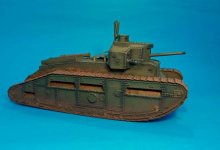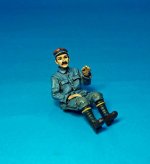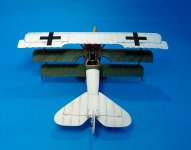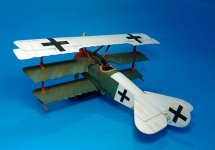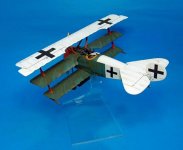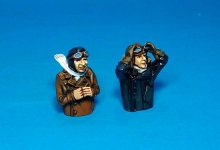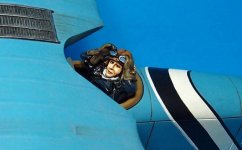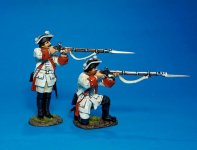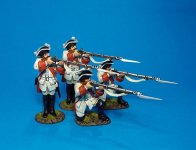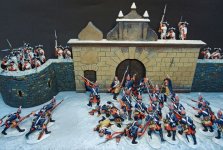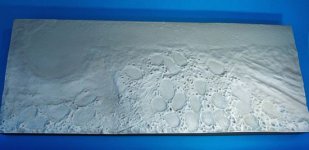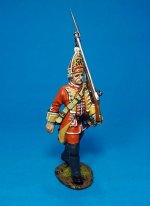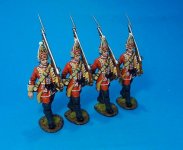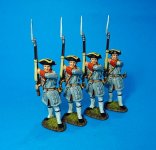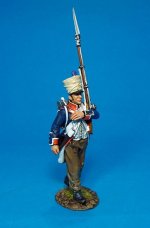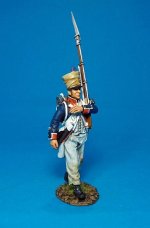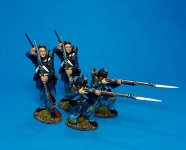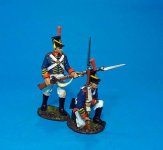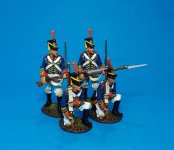Good morning and welcome to the July Release announcement for John Jenkins. Written on a very warm summer’s day here in the Bay area.
We have a bumper load of new editions including many soon to be favorites. I blame the rainy season in Hong Kong for so many great releases. Once again, we have something for everyone, so hope you like. These releases are expected to be available in August.
For space reasons we are dividing this announcement into 2 parts, so please read part 2.
All the new June Releases (arrival July) are now in stock and available, so do not miss out.
As always hope you enjoy the new releases as much as I do.
Mike
Sierra Toy Soldier Company
THE GREAT WAR 1914-1918
It was planned that by 1919 the Tank Corps were to receive no less than 6,000 Medium C tanks, a third of which were to be of a "Male" version, with a long six-pounder gun in the front of the superstructure.
Though drawings were prepared nothing would come of this “Male” version.
The ‘MALE” tank, was a category of tank prevalent in World War 1, which featured heavier armament, such as the long six-pounder gun.
The “FEMALE” tank featured multiple machine guns instead of the heavier armament seen on the much more common "MALE" tanks. As such, female tanks were normally cast in an anti-infantry role. "Female" tanks were therefore also lighter than "males".
By the end of World War I tank technology had developed, particularly in British tanks, to a point where it was decided that tanks should be both male and female (i.e. with both heavy armament and lighter machine guns). This has become the standard model for tank designs since World War I and since then the terms "male" and "female" have been disused.
When the war ended all orders were cancelled with only 36 Medium C “Hornet”, Female vehicles nearly finished. These were to be completed together with fourteen others built from pre-produced parts for a total production of fifty tanks.
No Medium C's were sent either with the Expedition Forces against the Bolsheviks in Russia or to the Anglo-Irish War. The only tanks participating in the 1919 victory parade were four Medium C's.
The only "action" the tank ever saw was putting down labour unrest in Glasgow, following the rioting known as the Battle of George Square in 1919.
From 1925 on, the Medium C was gradually replaced by the Medium Mark I and Medium Mark II. Proposals to use Medium Cs as recovery vehicles were rejected. A single vehicle was used to test a new type of transmission.
In 1940 the last remaining Medium C was melted down.
GWB-04 BRITISH MEDIUM TANK, MARK C, “MALE” TANK, (NOT PRODUCED)
(2pcs)
LIMITED EDITION 150
Retail us$188
Model dimensions 10 ½” x 5 ¼” x 3 ¾”
GWF-03A Berliet CBA, French Truck, 1916 Driver,
(1pc)
Retail us$32
KNIGHTS OF THE SKIES
Leutnant Hans Weiss, born 19th April 1892, was a German Ace, credited with 16 victories. Weiss’ personal colour was appropriately white, and as he was a formation leader this colour was painted on the upper surface of the top wing, as well as the rear of the fuselage, and tail.
The cowling and wheels were red, as he was part of Jasta 11, and Richthofen’s Flying Circus.
Weiss was to be flying this DR1 on 2nd May 1918, when he was shot down and killed over Mericourt , by Canadian Ace Merrill Taylor.
ACE-19 Fokker Dr1, 545/17, JASTA 11, Cappy, April/May 1918,
(1pcs)
Retail us$208
There will be another 2 “Red Nosed” Triplanes produced, which will give a total of 5 members of the famous “Flying Circus”!
ACEGP-02 German Pilots x 2,
(2pcs)
Retail us$36
THE SEVEN YEARS WAR
The Roth Wurzberg Infantry were mercenary troops in Austrian service.
The regiment was raised in 1757 from troops from the three existing Wurzburg infantry regiments.
The regiment was organized along similar lines to the Austrian infantry regiments, with 2 Feldbataillone, and 2 companies of grenadiers. It fought with the Austrian army from late 1756 until 1759.
During the seven years War the regiment was owned by the prince-bishop of Wurzburg and Bamberg Adam Friedrich Graf von Seinsheim.
The regiment was disbanded at the end of the war in 1763.
On December 5th 1757, at the Battle of Leuthen, one battalion of the Regiment was deployed in Haller’s brigade, in the second line of the Austrian left wing.
The regiment was to lose 24 officers and 755 men killed or captured during its valiant defence of the churchyard in Leuthen.
ROT-01 Roth Wurzburg Infantry Regiment, 2 Figures Firing,
(2pcs)
Retail us$78
ROT-01N Roth Wurzburg Infantry Regiment, 4 Figures Firing, Box Set,
(4pcs)
Retail us$138
This will be the second diorama base, and is specifically designed for the Leuthen, Attack on the Churchyard gateway. Spaces are provided for specific sets of the Prussian Grenadiers.
LEUT-100 LEUTHEN DIORAMA BASE,
(1pc)
Retail us$138
Base Size 25 ½” x 10” x 2”
Please note the display is designed to fit an Ikea “Billy” bookshelf, with a depth of 10 inches.
The width is approximately 12 inches narrower than the full length of the Ikea shelf.
THE BATTLE OF THE PLAINS OF ABRAHAM 1759
The 35th Regiment of Foot was active in North America during the French and Indian Wars, from 1756 until 1763.
The unit was probably best known for having served at Fort William Henry, during the siege, when the fort was overwhelmed by French forces commanded by General Montcalm.
They were also to see action at the Battles of Louisbourg and Quebec at the Battle of the Plains of Abraham.
QB-38 British, 35th Regiment of Foot, Grenadier Marching #1
(1pc)
Retail us$42
QB-38N British, 35th Regiment of Foot, Grenadier Marching, Box Set#1
Retail us$138
The Régiment de Béarn was a French Army regiment active in the 18th century, and was recruited from the Picardy region of France. It is principally known for its role in the Seven Years' War, when it served with distinction in the North American theatre.
French Regiments at this time consisted of two battalions.
The two battalions of this regiment operated on different theatres of operation for most of the Seven Years' War.
The 1st Battalion remained in Europe, and was assigned to the defence of the coasts. At August 1, 1757, the 1st Battalion was stationed at La Rochelle in the Aunis country.
The 2nd battalion was sent to New France, and arrived in June 1755.
The Regiment was to take part at the siege of Fort William Henry 1757, and in 1758, the regiment participated in the defense of Fort Carillon.
On September 13, 1759, they were present during the siege of Quebec City, and at the Battle of The Plains of Abraham, it was deployed in the centre.
This Regiment probably underwent the most changes in its uniform, than any other regiment in New France. Waistcoats, collars and cuffs were originally blue, but were changed to red in 1757.
In 1760, the 2nd battalion returned to France.
QF-36 REGIMENT de BEARN, Line Infantry At The Ready,
(1pc)
Retail us$40
QF-36N REGIMENT de BEARN, 4 Line Infantry, At The Ready, Box Set,
(4pcs)
Retail us$136
THE PENINSULAR WAR 1807-1814
French Infantry Battalions from 1807, consisted of 4 Fusilier (centre) companies, one Voltigeur, and one Grenadier company. Company strength was usually around 140 men and 3 officers.
The 4 Fusilier companies were distinguished by the colour of the Pom Pom on top of the Shako. The colours were, green, sky blue, orange and for the 4th Company Violet.
PFL-07W FRENCH LINE INFANTRY 1807, 66th Line, 4th Company, FUSILIER MARCHING #3W
(1pc)
Retail us$40
PFL-07B FRENCH LINE INFANTRY 1807, 66th Line, 4th Company,
FUSILIER MARCHING #3B
Retail us$40
PFL-07N FRENCH LINE INFANTRY 1807, 66th Line, 4th Company,
FUSILIER MARCHING BOX SET #3
(4pcs)
Retail us$136
Now on to part two.
Mike
Sierra Toy Soldier Company
We have a bumper load of new editions including many soon to be favorites. I blame the rainy season in Hong Kong for so many great releases. Once again, we have something for everyone, so hope you like. These releases are expected to be available in August.
For space reasons we are dividing this announcement into 2 parts, so please read part 2.
All the new June Releases (arrival July) are now in stock and available, so do not miss out.
As always hope you enjoy the new releases as much as I do.
Mike
Sierra Toy Soldier Company
THE GREAT WAR 1914-1918
It was planned that by 1919 the Tank Corps were to receive no less than 6,000 Medium C tanks, a third of which were to be of a "Male" version, with a long six-pounder gun in the front of the superstructure.
Though drawings were prepared nothing would come of this “Male” version.
The ‘MALE” tank, was a category of tank prevalent in World War 1, which featured heavier armament, such as the long six-pounder gun.
The “FEMALE” tank featured multiple machine guns instead of the heavier armament seen on the much more common "MALE" tanks. As such, female tanks were normally cast in an anti-infantry role. "Female" tanks were therefore also lighter than "males".
By the end of World War I tank technology had developed, particularly in British tanks, to a point where it was decided that tanks should be both male and female (i.e. with both heavy armament and lighter machine guns). This has become the standard model for tank designs since World War I and since then the terms "male" and "female" have been disused.
When the war ended all orders were cancelled with only 36 Medium C “Hornet”, Female vehicles nearly finished. These were to be completed together with fourteen others built from pre-produced parts for a total production of fifty tanks.
No Medium C's were sent either with the Expedition Forces against the Bolsheviks in Russia or to the Anglo-Irish War. The only tanks participating in the 1919 victory parade were four Medium C's.
The only "action" the tank ever saw was putting down labour unrest in Glasgow, following the rioting known as the Battle of George Square in 1919.
From 1925 on, the Medium C was gradually replaced by the Medium Mark I and Medium Mark II. Proposals to use Medium Cs as recovery vehicles were rejected. A single vehicle was used to test a new type of transmission.
In 1940 the last remaining Medium C was melted down.
GWB-04 BRITISH MEDIUM TANK, MARK C, “MALE” TANK, (NOT PRODUCED)
(2pcs)
LIMITED EDITION 150
Retail us$188
Model dimensions 10 ½” x 5 ¼” x 3 ¾”
GWF-03A Berliet CBA, French Truck, 1916 Driver,
(1pc)
Retail us$32
KNIGHTS OF THE SKIES
Leutnant Hans Weiss, born 19th April 1892, was a German Ace, credited with 16 victories. Weiss’ personal colour was appropriately white, and as he was a formation leader this colour was painted on the upper surface of the top wing, as well as the rear of the fuselage, and tail.
The cowling and wheels were red, as he was part of Jasta 11, and Richthofen’s Flying Circus.
Weiss was to be flying this DR1 on 2nd May 1918, when he was shot down and killed over Mericourt , by Canadian Ace Merrill Taylor.
ACE-19 Fokker Dr1, 545/17, JASTA 11, Cappy, April/May 1918,
(1pcs)
Retail us$208
There will be another 2 “Red Nosed” Triplanes produced, which will give a total of 5 members of the famous “Flying Circus”!
ACEGP-02 German Pilots x 2,
(2pcs)
Retail us$36
THE SEVEN YEARS WAR
The Roth Wurzberg Infantry were mercenary troops in Austrian service.
The regiment was raised in 1757 from troops from the three existing Wurzburg infantry regiments.
The regiment was organized along similar lines to the Austrian infantry regiments, with 2 Feldbataillone, and 2 companies of grenadiers. It fought with the Austrian army from late 1756 until 1759.
During the seven years War the regiment was owned by the prince-bishop of Wurzburg and Bamberg Adam Friedrich Graf von Seinsheim.
The regiment was disbanded at the end of the war in 1763.
On December 5th 1757, at the Battle of Leuthen, one battalion of the Regiment was deployed in Haller’s brigade, in the second line of the Austrian left wing.
The regiment was to lose 24 officers and 755 men killed or captured during its valiant defence of the churchyard in Leuthen.
ROT-01 Roth Wurzburg Infantry Regiment, 2 Figures Firing,
(2pcs)
Retail us$78
ROT-01N Roth Wurzburg Infantry Regiment, 4 Figures Firing, Box Set,
(4pcs)
Retail us$138
This will be the second diorama base, and is specifically designed for the Leuthen, Attack on the Churchyard gateway. Spaces are provided for specific sets of the Prussian Grenadiers.
LEUT-100 LEUTHEN DIORAMA BASE,
(1pc)
Retail us$138
Base Size 25 ½” x 10” x 2”
Please note the display is designed to fit an Ikea “Billy” bookshelf, with a depth of 10 inches.
The width is approximately 12 inches narrower than the full length of the Ikea shelf.
THE BATTLE OF THE PLAINS OF ABRAHAM 1759
The 35th Regiment of Foot was active in North America during the French and Indian Wars, from 1756 until 1763.
The unit was probably best known for having served at Fort William Henry, during the siege, when the fort was overwhelmed by French forces commanded by General Montcalm.
They were also to see action at the Battles of Louisbourg and Quebec at the Battle of the Plains of Abraham.
QB-38 British, 35th Regiment of Foot, Grenadier Marching #1
(1pc)
Retail us$42
QB-38N British, 35th Regiment of Foot, Grenadier Marching, Box Set#1
Retail us$138
The Régiment de Béarn was a French Army regiment active in the 18th century, and was recruited from the Picardy region of France. It is principally known for its role in the Seven Years' War, when it served with distinction in the North American theatre.
French Regiments at this time consisted of two battalions.
The two battalions of this regiment operated on different theatres of operation for most of the Seven Years' War.
The 1st Battalion remained in Europe, and was assigned to the defence of the coasts. At August 1, 1757, the 1st Battalion was stationed at La Rochelle in the Aunis country.
The 2nd battalion was sent to New France, and arrived in June 1755.
The Regiment was to take part at the siege of Fort William Henry 1757, and in 1758, the regiment participated in the defense of Fort Carillon.
On September 13, 1759, they were present during the siege of Quebec City, and at the Battle of The Plains of Abraham, it was deployed in the centre.
This Regiment probably underwent the most changes in its uniform, than any other regiment in New France. Waistcoats, collars and cuffs were originally blue, but were changed to red in 1757.
In 1760, the 2nd battalion returned to France.
QF-36 REGIMENT de BEARN, Line Infantry At The Ready,
(1pc)
Retail us$40
QF-36N REGIMENT de BEARN, 4 Line Infantry, At The Ready, Box Set,
(4pcs)
Retail us$136
THE PENINSULAR WAR 1807-1814
French Infantry Battalions from 1807, consisted of 4 Fusilier (centre) companies, one Voltigeur, and one Grenadier company. Company strength was usually around 140 men and 3 officers.
The 4 Fusilier companies were distinguished by the colour of the Pom Pom on top of the Shako. The colours were, green, sky blue, orange and for the 4th Company Violet.
PFL-07W FRENCH LINE INFANTRY 1807, 66th Line, 4th Company, FUSILIER MARCHING #3W
(1pc)
Retail us$40
PFL-07B FRENCH LINE INFANTRY 1807, 66th Line, 4th Company,
FUSILIER MARCHING #3B
Retail us$40
PFL-07N FRENCH LINE INFANTRY 1807, 66th Line, 4th Company,
FUSILIER MARCHING BOX SET #3
(4pcs)
Retail us$136
Now on to part two.
Mike
Sierra Toy Soldier Company


